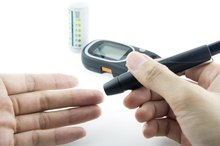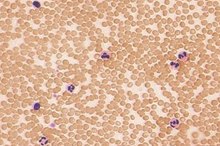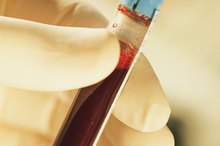What Food or Drink Can Raise Your PSA Levels?
Prostate specific antigen, or PSA is a protein produced by the prostate that is found in semen 2. Measuring PSA levels is an important component to detecting possible signs of prostate cancer. High PSA levels in your blood could be a warning sign of an issue with your prostate.
Normal PSA
PSA tests reveal the amount of PSA detected in the blood. According to the National Cancer Institute, a PSA level below 4.0 ng/mL is considered normal.
Breads
Health Risks of Corn Oil
Learn More
A September, 2006 "Urology" journal study of 29 Australian men with prostate cancer found that those who ate ate wheat bread saw a rise in PSA levels of 40 percent. Conversely, the men who ate soy-enriched bread had a drop in their PSA levels of 12.9 percent.
Dairy Products
A randomized, double-blind, placebo-controlled trial conducted by researchers at Harvard University that began in 1982 called the Physician's Health Study reviewed more than 20,000 male physicians over 11 years and concluded that there was a moderate increase in prostate cancer risk associated with increased consumption of dairy products.
Red Meat
How Many Calories Are in Malt Liquor?
Learn More
Eating red meat five or more times per week can raise your PSA levels and possibly double your risk for prostate cancer, according to researchers at the Project to End Cancer.
Foods to Lower PSA Levels
According to the Mayo Clinic, eating a diet rich in whole grains, fruits and vegetables -- including tomatoes and broccoli, which contain antioxidants -- may help lower PSA levels and decrease your risk of developing prostate cancer.
Related Articles
References
- naturalquest.com: What Is PSA?
- cancer.gov: Prostate-Specific Antigen (PSA) Test
- psa-rising.com: Eating Well to Protect Against Cancer
- US Preventive Services Task Force, Grossman DC, Curry SJ, et al. Screening for Prostate Cancer: US Preventive Services Task Force Recommendation Statement JAMA. 2018;319:1901-1913. doi:10.1001/jama.2018.3710
- Informed Health. How does the prostate work? Institute for Quality and Efficiency in Health Care (IQWiG). Updated August 23, 2016.
- National Cancer Institute. Prostate-specific antigen (PSA) test. Updated October 4, 2017.
- National Institute on Aging. Prostate problems. National Institutes of Health. Updated July 01, 2016.
- Elkahwaji JE. The role of inflammatory mediators in the development of prostatic hyperplasia and prostate cancer. Res Rep Urol. 2012;5:1-10. Published 2012 Dec 31. doi:10.2147/RRU.S23386
- Burns JA, Weiner AB, Catalona WJ, et al. Inflammatory bowel disease and the risk of prostate cancer. Eur Urol. 2019;75:846-852. doi:10.1016/j.eururo.2018.11.039
- Ge Y, Shi Q, Yao W, Cheng Y, Ma G. The association between inflammatory bowel disease and prostate cancer risk: a meta-analysis. Prostate Cancer Prostatic Dis. 2020;23:53-58. doi:10.1038/s41391-019-0177-7
- Teerlink CC, Thibodeau SN, McDonnell SK, et al. Association analysis of 9,560 prostate cancer cases from the International Consortium of Prostate Cancer Genetics confirms the role of reported prostate cancer associated SNPs for familial disease. Hum Genet. 2014;133:347-356. doi:10.1007/s00439-013-1384-2
- Kani HT, Shen B. Male issues of the ileal pouch. Inflamm Bowel Dis. 2015;21(3):716-722. doi:10.1097/MIB.0000000000000226
- Jung YS, Han M, Park S, Kim WH, Cheon JH. Cancer risk in the early stages of inflammatory bowel disease in Korean patients: A nationwide population-based study. J Crohns Colitis. 2017;11:954-962. doi:10.1093/ecco-jcc/jjx040









